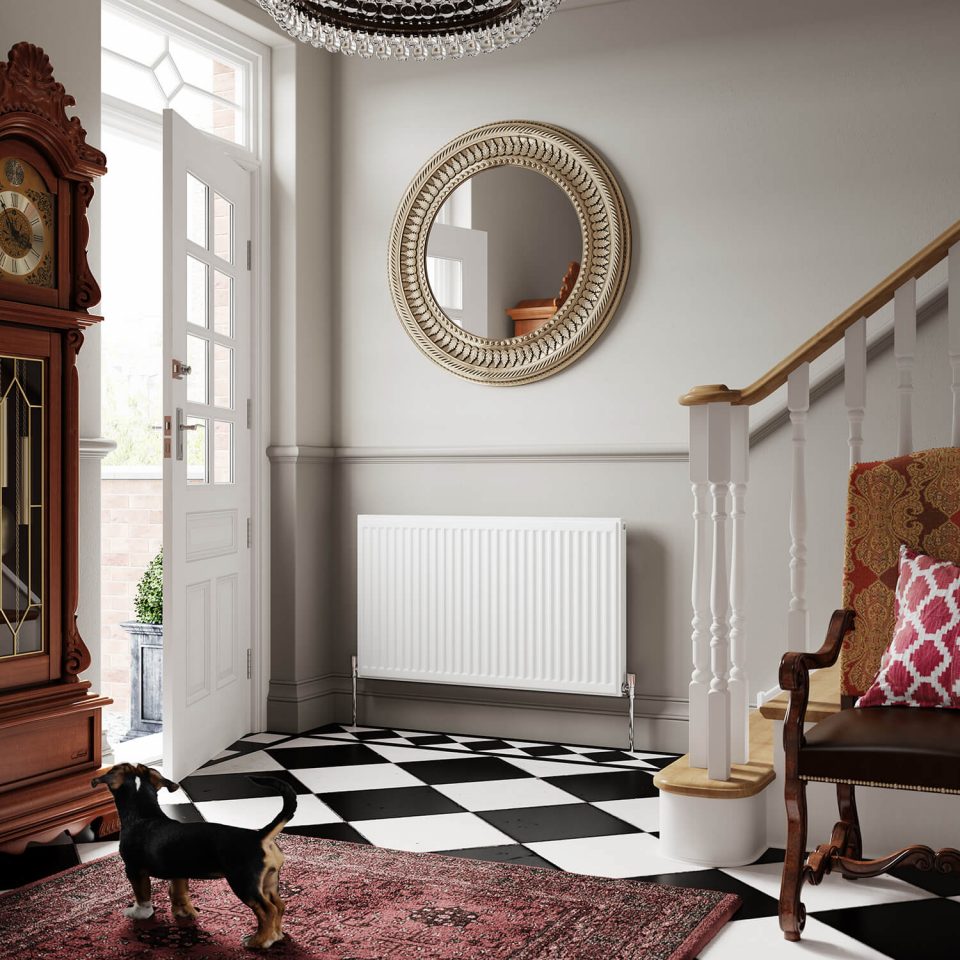Radiators do not have fixed outputs. The room temperature, as well as the flow and return temperatures, have a bearing on what the heat output will be.
A type 22 compact double convector radiator – 600mm(H) x 800mm(w) – has the following outputs for different scenarios.
Flow temp to rad = 60°C
Return out of rad = 40°C
Room temp = 21°C
Rad output = 670 Watts
(670 Joules of heat delivered into the room per second)
Flow temp to rad = 60°C
Return out of rad = 40°C
Room temp = 18°C
Rad output = 764 Watts
(764 Joules of heat delivered into the room per second)
Flow temp to rad = 60°C
Return out of rad = 45°C
Room temp = 18 °C
Rad output = 844 Watts
(844 Joules of heat delivered into the room per second)
Flow temp to rad = 60°C
Return out of rad = 45°C
Room temp = 21 °C
Rad output = 748 Watts
(748 Joules of heat delivered into the room per second)
Flow temp to rad = 55°C
Return out of rad = 45°C
Room temp = 21 °C
Rad output = 670 Watts
(670 Joules of heat delivered into the room per second)
Flow temp to rad = 55°C
Return out of rad = 45°C
Room temp = 18 °C
Rad output = 764 Watts
(764 Joules of heat delivered into the room per second)
Flow temp to rad = 45°C
Return out of rad = 40°C
Room temp = 18 °C
Rad output = 535 Watts
(535 Joules of heat delivered into the room per second)
Radiators are a crucial component of heating systems, but their heat output is not fixed. The room temperature, as well as the flow and return temperatures, play a significant role in determining how much heat a radiator will release into a room. As demonstrated by the different outputs for various scenarios listed above, small changes in these variables can lead to significant differences in heat output. Therefore, it’s essential to consider these factors when designing and using heating systems to ensure optimal heat output and energy efficiency.



Great piece Nathan. You could also have added the other variables like connecting the flow at the top and the return at the bottom will increase the output by up to 10% and putting a cover or a shelf over it will reduce it. But then that would have made it too long for many to take in. All the information on sizing is in the Central Heating Design Guide but how many installers have a copy let alone read it? From my experience, the customer chooses the radiator based on the style and space available.